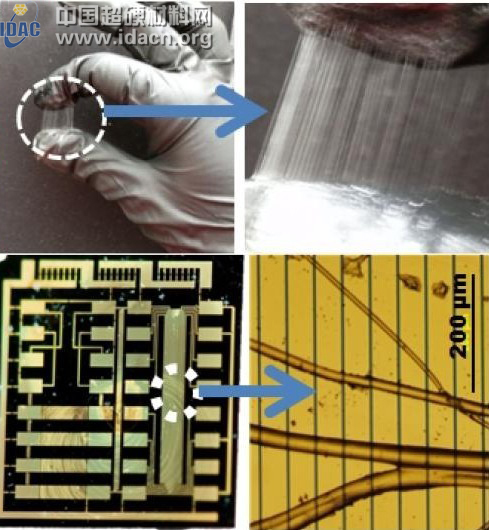
Local humidity can change the current inside the quantum dots, and researchers adjust the humidity to control the spacing of the quantum dots. “If you reduce the humidity around the device, the ultra-thin fibers lose water and shrink, and the graphene components on the fibers will gather at the nanometer scale, which accelerates the electron transfer from one quantum point to another. Just need to read the current value, we can know the humidity of the surrounding environment," Berry explained.
Berry said that for every 0.35 nm reduction in the spacing of graphene quantum dots, the conductivity of the device is increased by 43 times. In addition, because the air contains moisture, the reduction of air pressure will also reduce the water content of the air, which will further agglomerate the graphene quantum dots and greatly increase its conductivity. Quantum mechanics studies have found that the probability of electron tunneling from one electrode to another is limited, and this probability is inversely proportional to the tunneling distance (also called the electrode gap).
The research application is very promising, especially in improving humidity, pressure and temperature sensor technology.
Unlike general humidity sensors, this graphene-based sensor is particularly unique due to its extremely sensitive nature under vacuum conditions. Berry said that these sensing devices can be combined on spacecraft for low-humidity measurement technology requiring a high-level environment. In addition, the device can be used to detect traces of water on Mars, while Mars' atmospheric pressure is only one-hundredth of the Earth's. Under such high vacuum conditions, the resolution of this light sensor to measure humidity will become higher.
The core of this device is the electron tunneling modulation technique; the sensing reaction of the device is achieved by polymerizing ultra-thin fibers. Berry said that the team is currently developing other polymers to expand the range of applications for the device.
“If we replace the current ultra-thin fiber with an easily sensitive polymer, we can create a new sensor for different uses,†adds Berry. “I envision this technology will have a broad and profound impact on sensing technology. ."
The study was funded by the US National Science Foundation CAREER award of $400,000, and the research was published on Nano Letters. (Compiled from "Graphene Quantum Dots May Someday Tell If It Will Rain On Mars" Translation: Wang Xian)
Since the 1960's the service and the products offered by our company have been well received among the machinery, tools and Hardware business circle. Tools and hardware which supplied by us, have enjoyed very good reputation in Europe, America, the Middle East, Africa and other regions of the world for their steady and exquisite quality, reasonable price and reliable service. All these tools and hardware are strictly produced according to the relative DIN standard or the French Norm or in strict accordance with the customers' special requirements. Many products have got GS/TUV, CE or UL certificates.
Hand Tool, Industrial Hand Tools, Small Hand Tools, Professional Hand Tools
QINGDAO SANJET NEW POWER MACHINERY CO., LTD. , http://www.sanjet.net